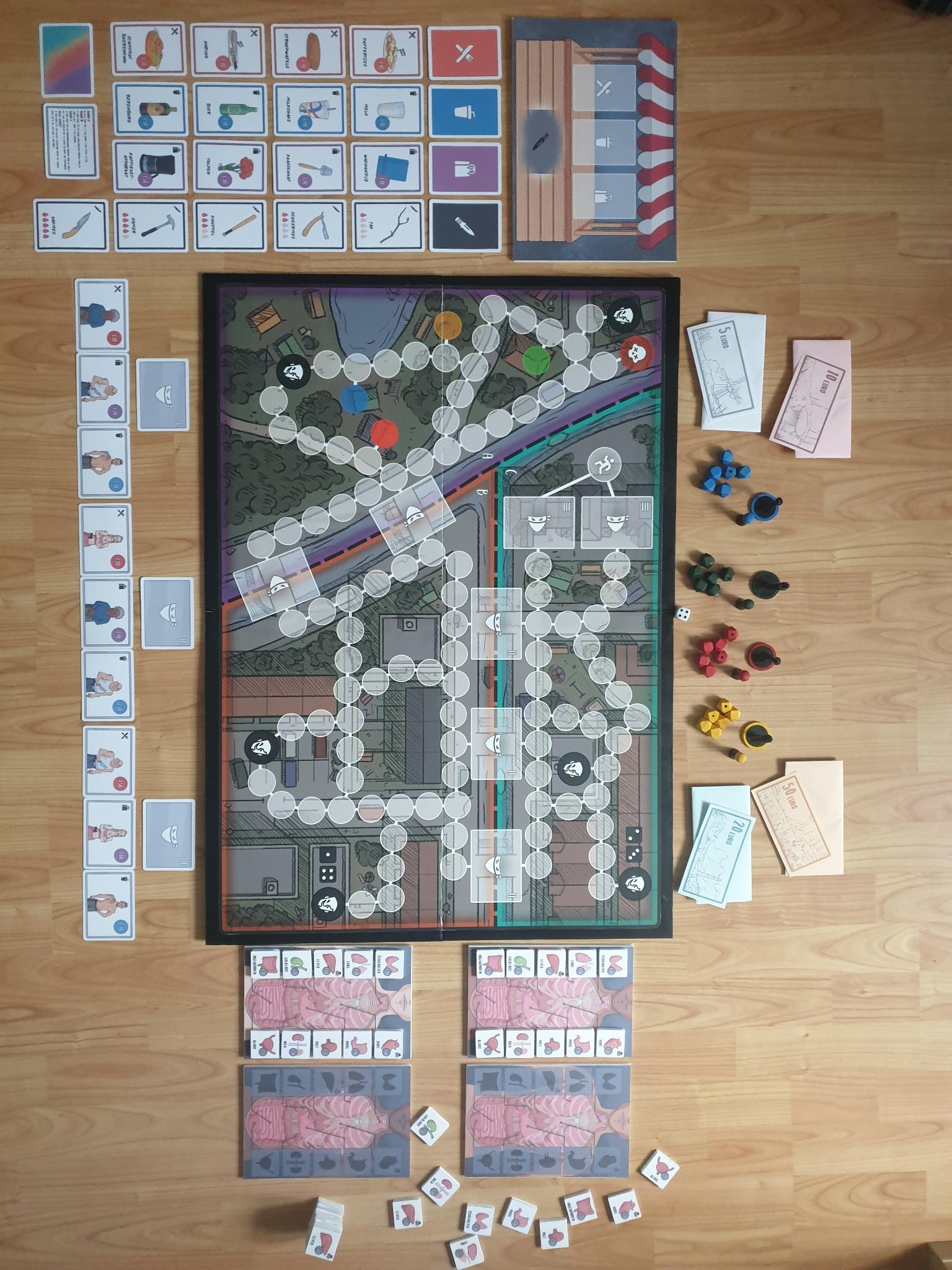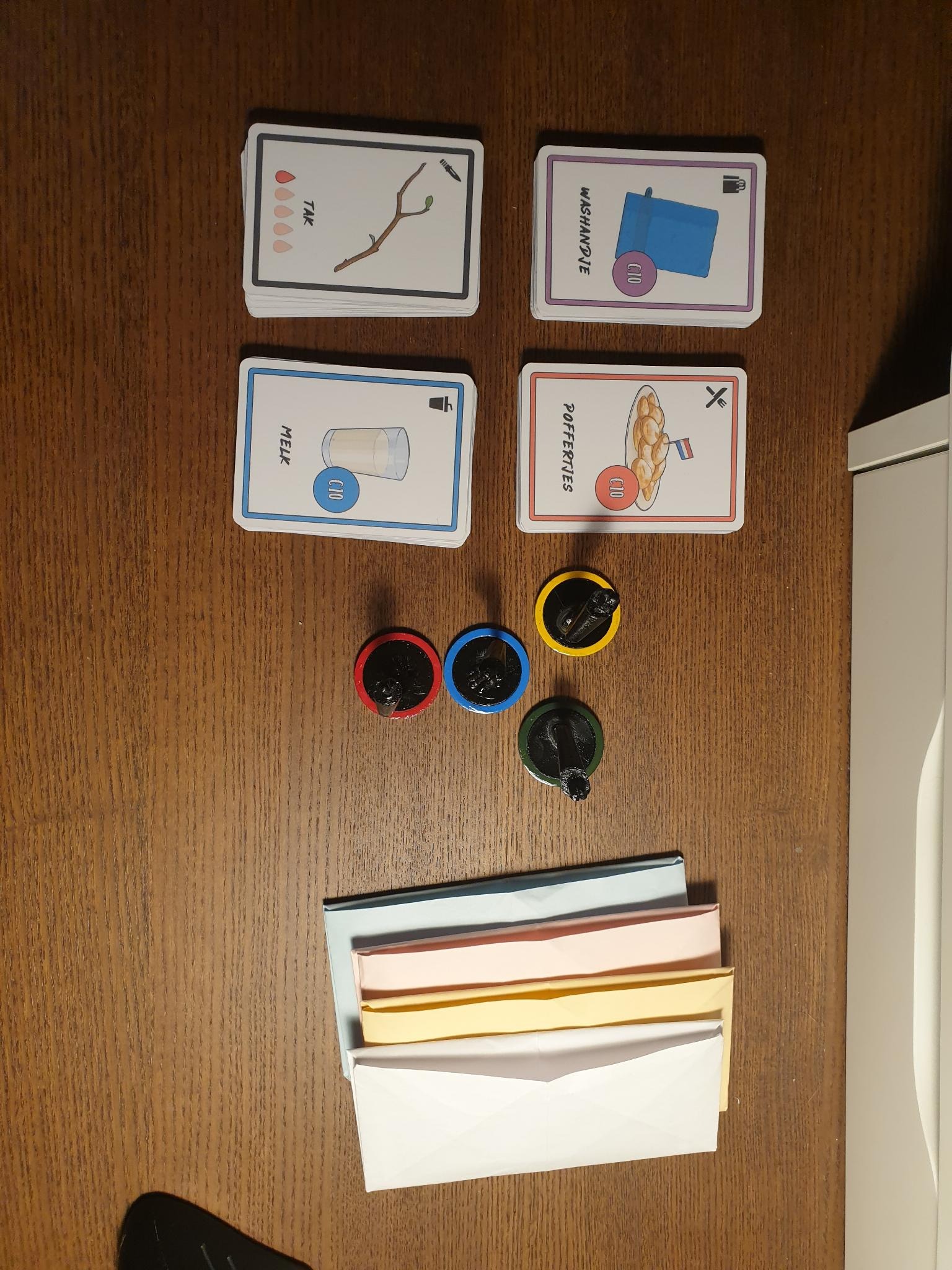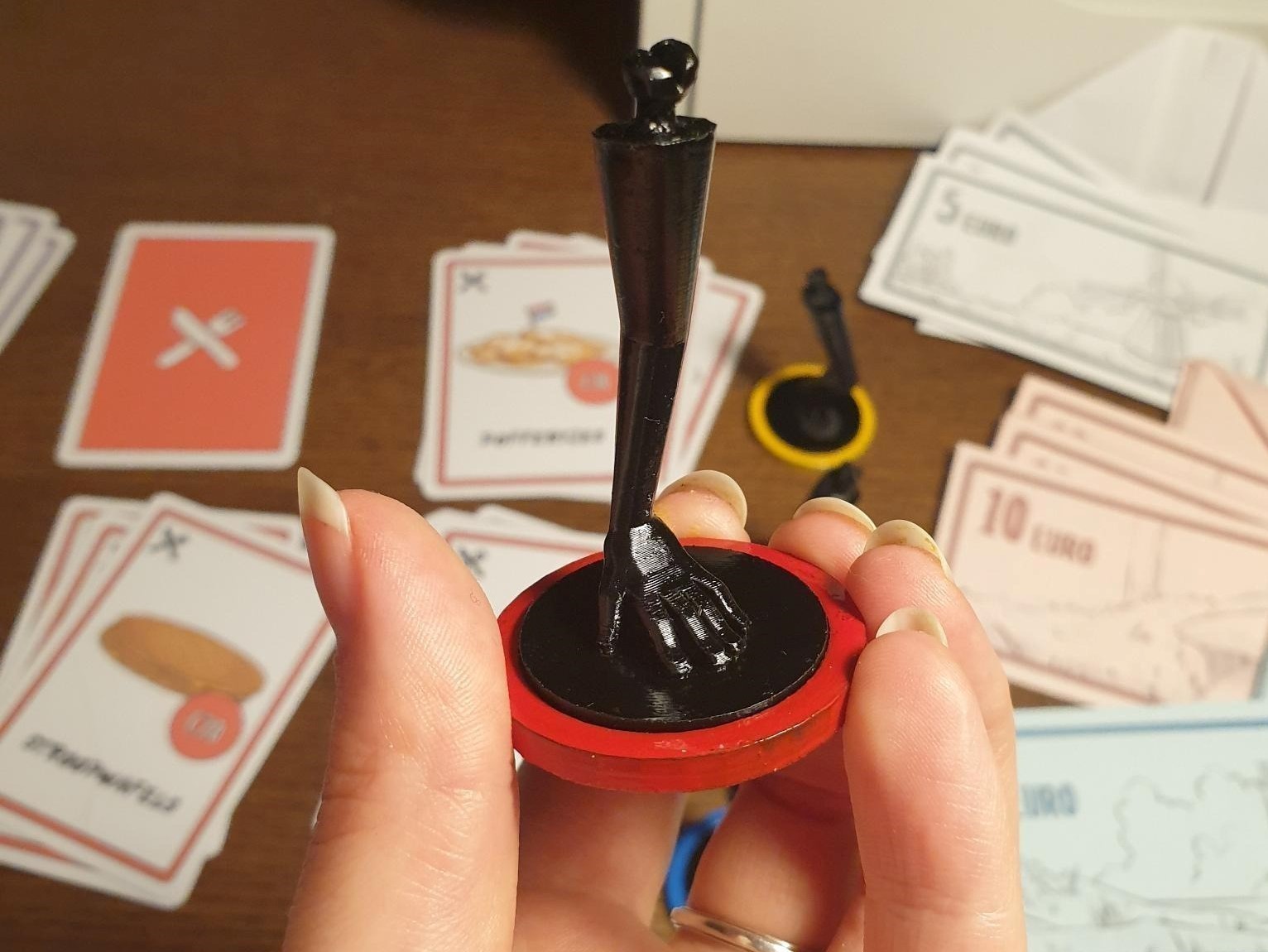De vlucht naar Panama
De vlucht naar Panama roughly translates to Fleeing to Panama. In this satirical board game the players want to escape from the Netherlands.
"The economy of the Netherlands is in a bad shape. The poor players want to escape, but this doesn't come without a cost.
Because the Netherlands has become more expensive poverty is on the rise.
A side effect of this happening is that the crime rate has increased.
Many people join gangs that block the players during their travels.
The gang members want food, drinks or items before the player is allowed to pass.
But how can you pay off gang members when you have no money?
You harvest and sell organs on the black market for money so you can buy the necessary items.
With some luck, you might be able to harvest and steal from other players.
As a player, you must make sure you reach the escape point before your heart or liver is harvested. Without these two organs, it is game over."
The game highlights a certain societal problem in a satirical way. This is done on purpose so the players can have fun while playing instead of getting angry or upset about the subject.
With this game I try to give the players some room to discuss the situation and their feelings regarding the subject amongst themselves, creating a safe venting environment.
Start of the project
At the start of the project I knew that I wanted to create an applied board game concerning a societal problem, but the subject matter wasn't decided yet.
The societal problems that I think might have a negative impact, don't necessarily reflect what other people would specify as a negative problem.
I decided to specify a target audience (18 to 30 year old) and ask them to fill in a form with some questions.
These questions were focused on what societal problems they think there are, how these problems impact their future (choices) and how it makes them feel.
The results showed that there were three main themes that impacted their feelings negatively and made them uncertain about their future.
These themes were:
- The housing crisis
- Student Debt
- Inflation and cost of living, economy
With these themes as a focus I designed three different prototypes.
The three different prototypes
Prototype 1: Student debt
Players: 1 vs 2
A player called "Patrick" has to escape, but he first has to visit some family before leaving.
The family members live in different cities all over the Netherlands.
At the start of the game Patrick will randomly get 5 different cards that decide the family members that he needs to visit.
The other 2 players play as a pair that have to work together to gather enough evidence about the player's attempt to flee the country before paying off his student debts.
If they have gathered enough evidence, by visiting places Patrick visited before, they have to intercept Patrick before he reaches the escape point.
On this Miro board you can read the rules for this prototype: Miro
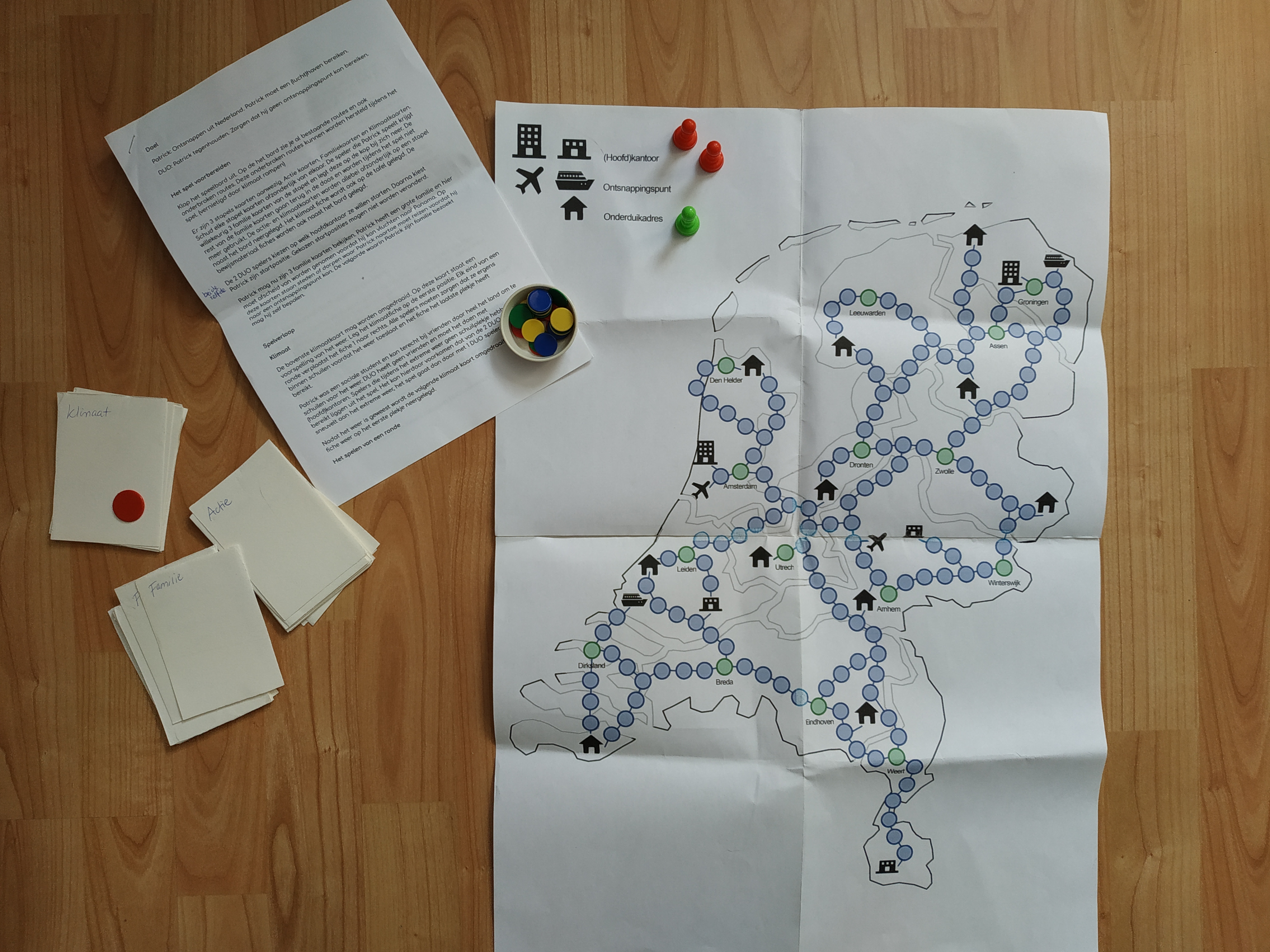
Prototype 2: Housing crisis
Players: max. 4 vs 1
In this prototype, one player (the government) has to catch the other players. The players have to gather some items before they can escape to Panama.
These items are spread out all over the board. Players can store items in their shared houses because if they carry items they move slower. Every player has a different specialty that can help them and other players.
They can also connect houses in order to dodge police patrols.
The government player can have the police patrol certain spots. When the police intercepts a player, the government player gains a foreclosure chip.
With this chip the government player can foreclose and confiscate the players their houses and items. If the players no longer have items, and they can't gather new ones, they lose.
On this Miro board you can read the rules for this prototype: Miro
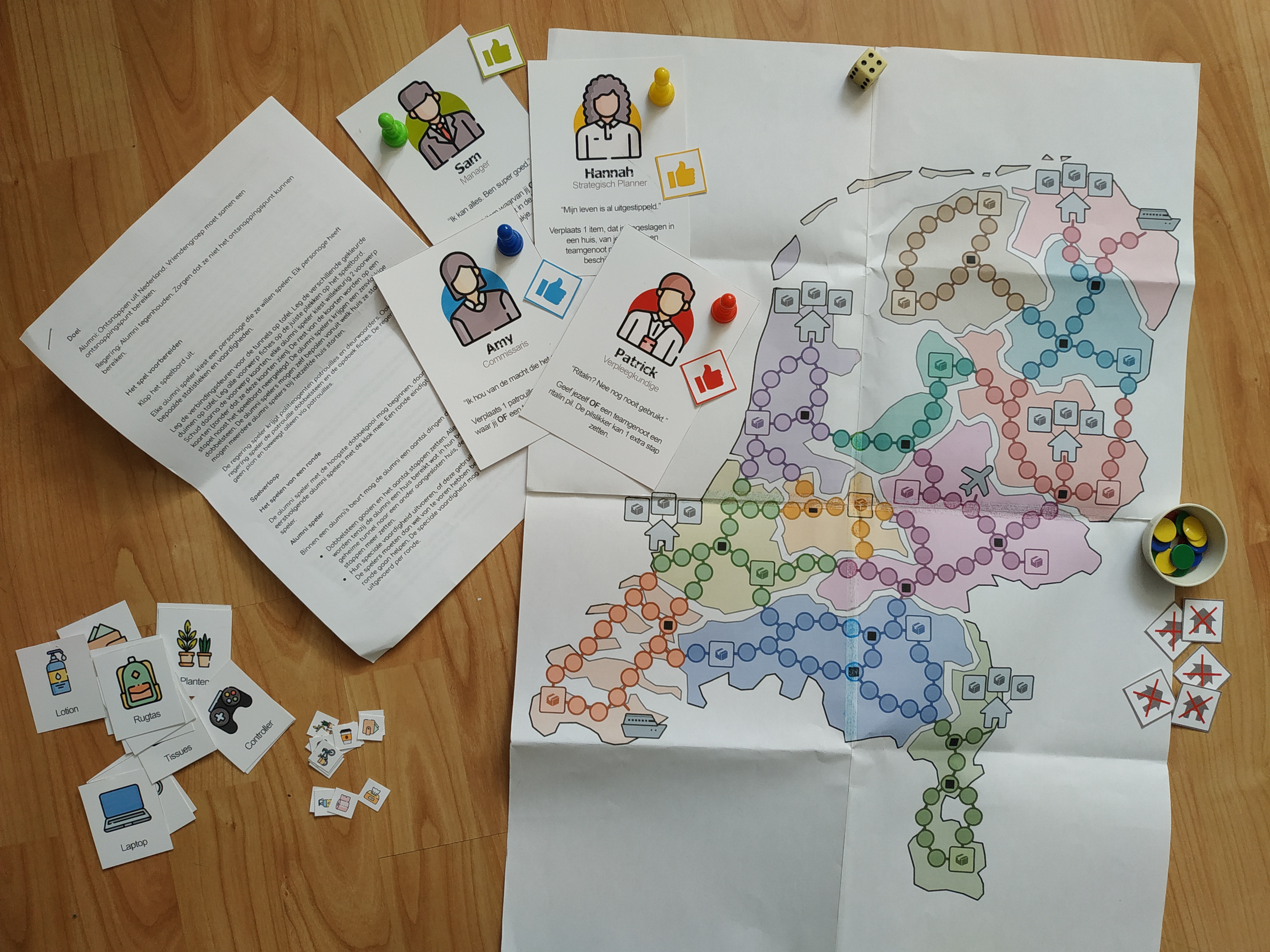
Prototype 3: Economy
Players: free for all
In this prototype, players play against each other. The Netherlands have become too expensive and therefore the players want to escape to Panama to start a new life. However, there are gang members that block the roads.
To get past these gang members players need to give them food, drinks or items of a certain value. These items can be bought at the market. But as the player have little money they need to sell their organs to be able to afford these products.
Meanwhile, the market will change the value of items per round.
On this Miro board you can read the rules for this prototype: Miro
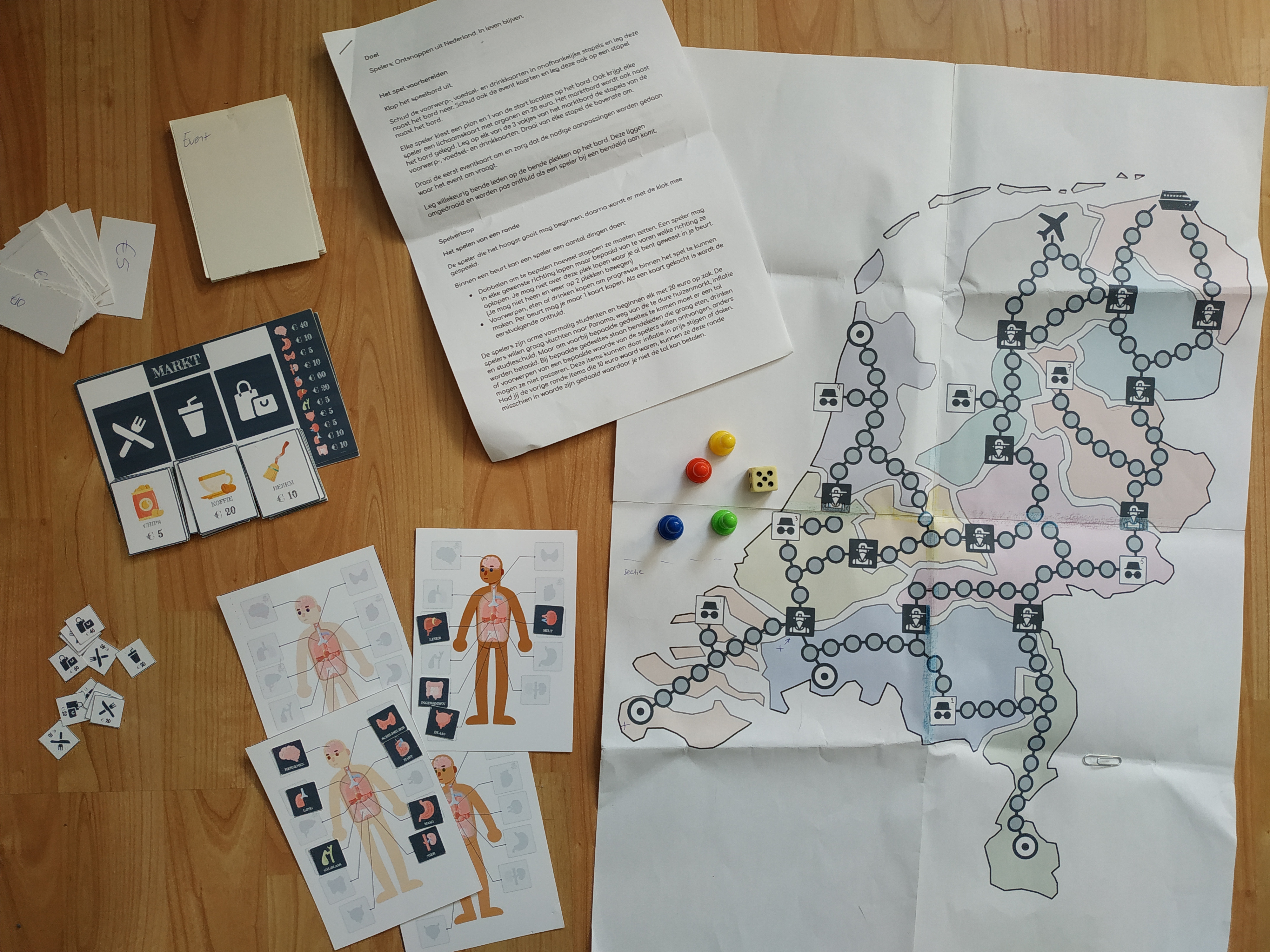
Choosing a design
I tested the three game designs with the target audience(test results can be found here)
to figure out which design they liked best. It turned out that the third prototype was the only prototype where the users had only positive feedback, so I decided to continue iterating on that prototype.
Users indicated that they really liked that they could steal organs from other players, so I expanded that feature by adding that a player could also steal a card. However, stealing doesn't come without a risk.
Players can defend themselves by having a weapon that they can buy at a high risk black market. This black market has a "passcode", players need to roll a specific amount of eyes to access the market.
If a players rolls a different outcome, they will be transported to the warehouse where their organs will get harvested.
At this stage I also made three different boards and asked the players which style they liked best. They unanimously chose the last, top down board:
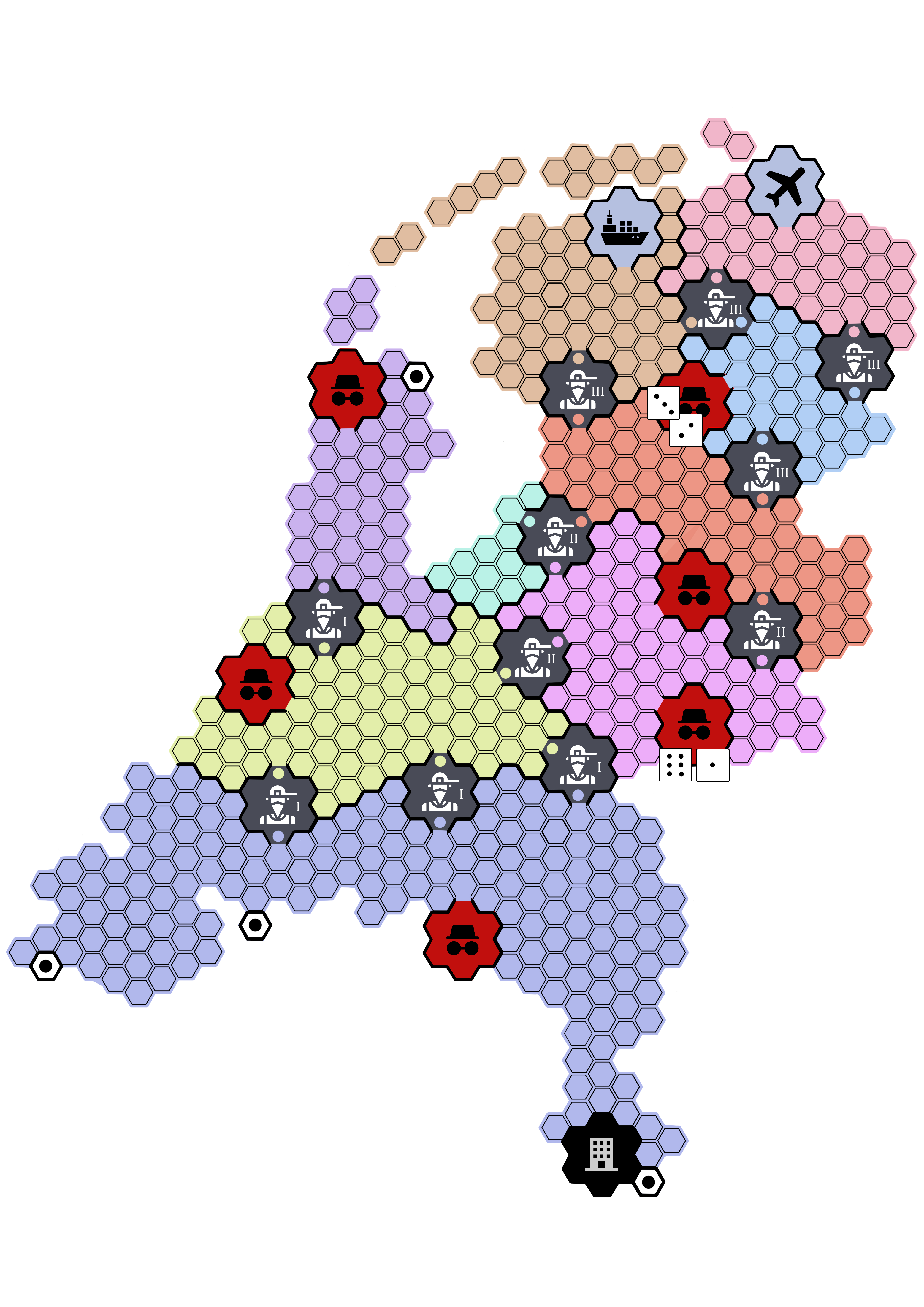
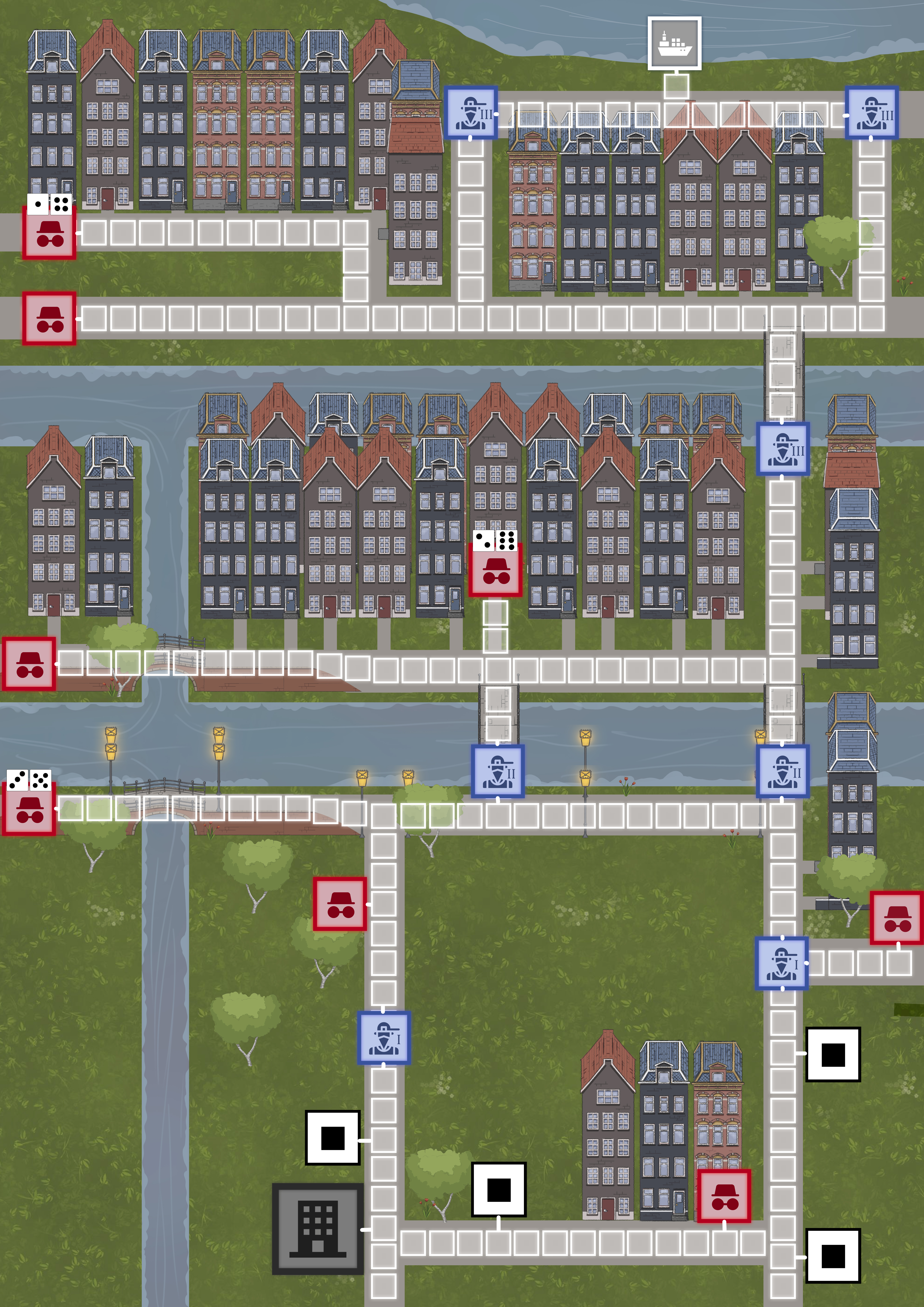
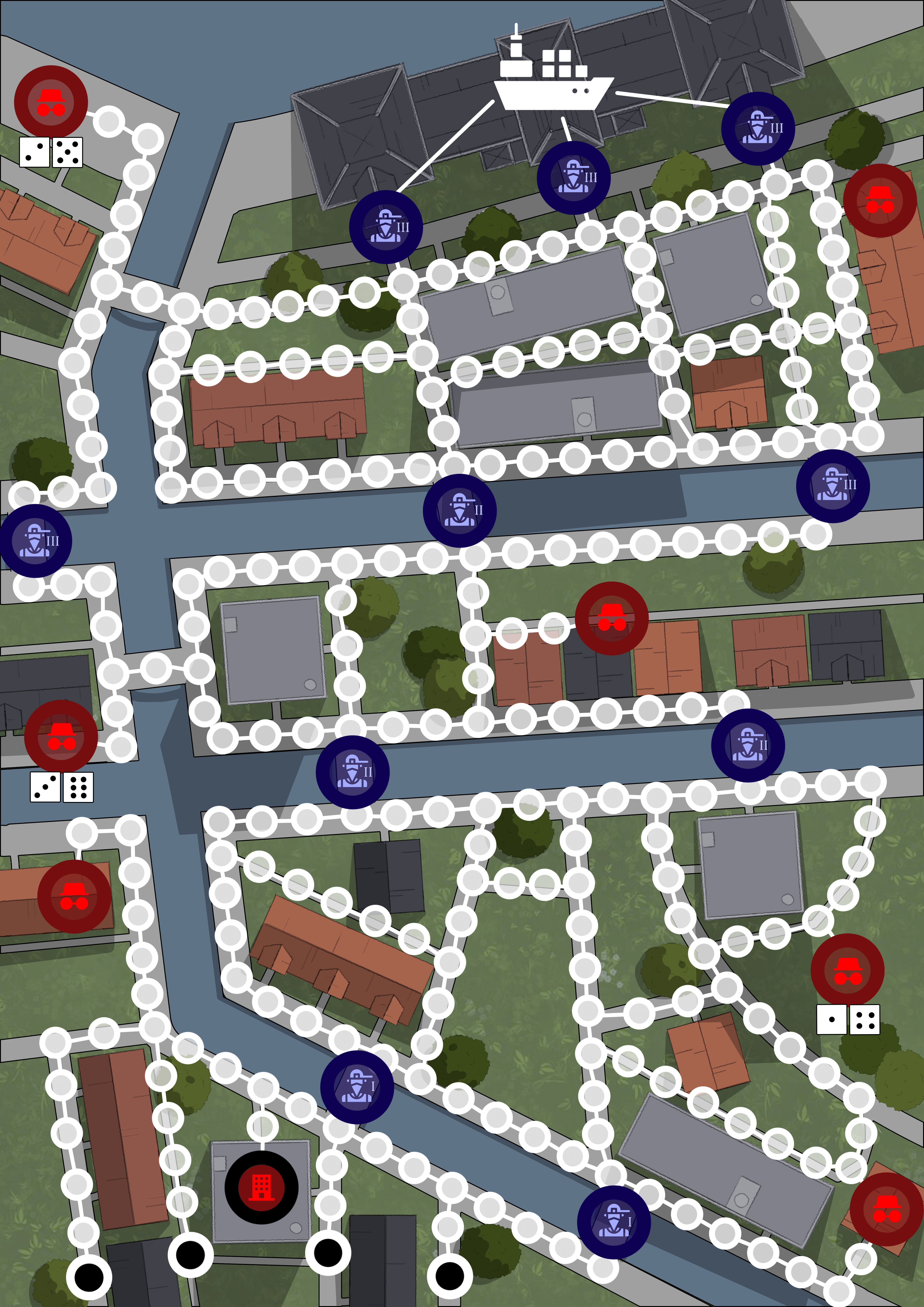
Choosing an artstyle
For the board game I tested different art styles. I asked the target audience what word they thought fit a certain style. The target audience thought the second style to best fit the satirical theme and had the best visual readability, which decided that I would use that style throughout the project. The fourth design was thought to be the least interesting.
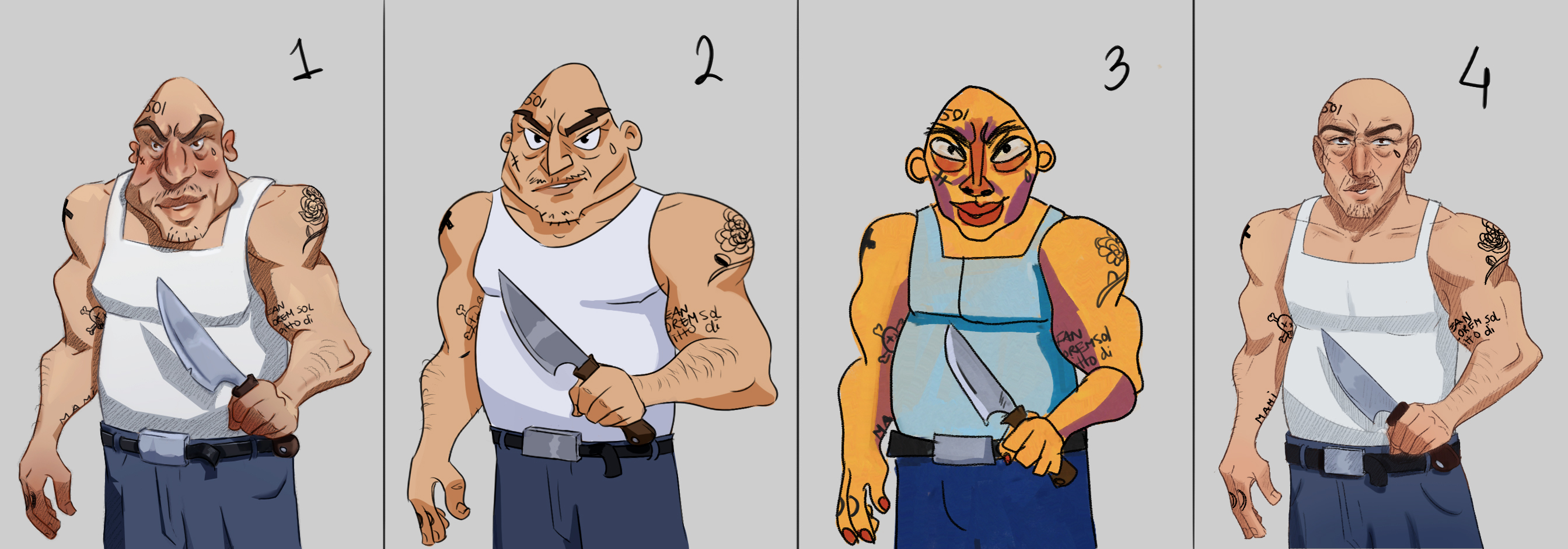
Finishing the game
After another round of testing I added a first player bonus and made the defender's weapon always deal +1 damage in an attempt to balance the combat.
The events, cards that players had to turn around at the start of a round, didn't really work. Players kept forgetting to flip the card. They also indicated that it was hard to catch up with the other players, once they had been in the warehouse.
So I added zone bonuses instead of events.
Depending on the zones that the player is in they will get a certain bonus, the first zone for example has a +1 added to the steps a player can take.
The game rules can be found here
These are some pictures of the final product:
